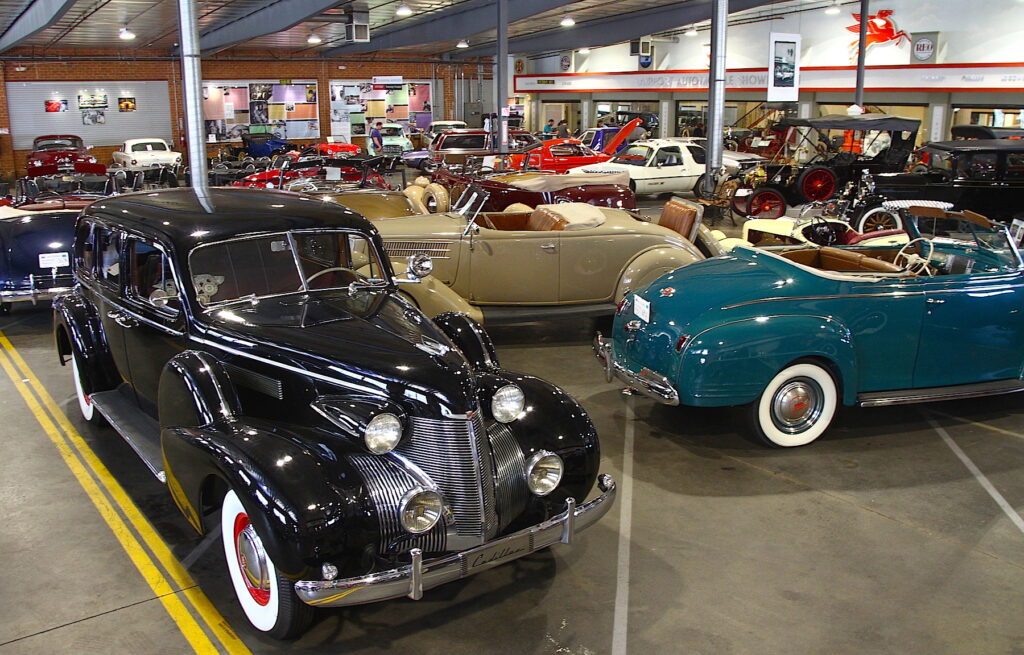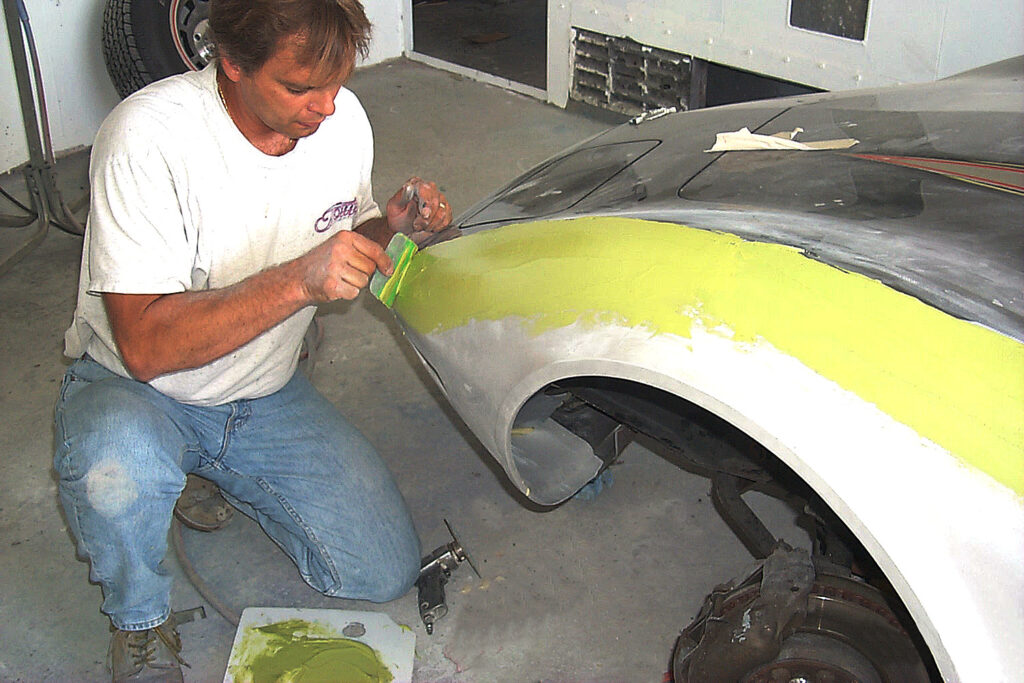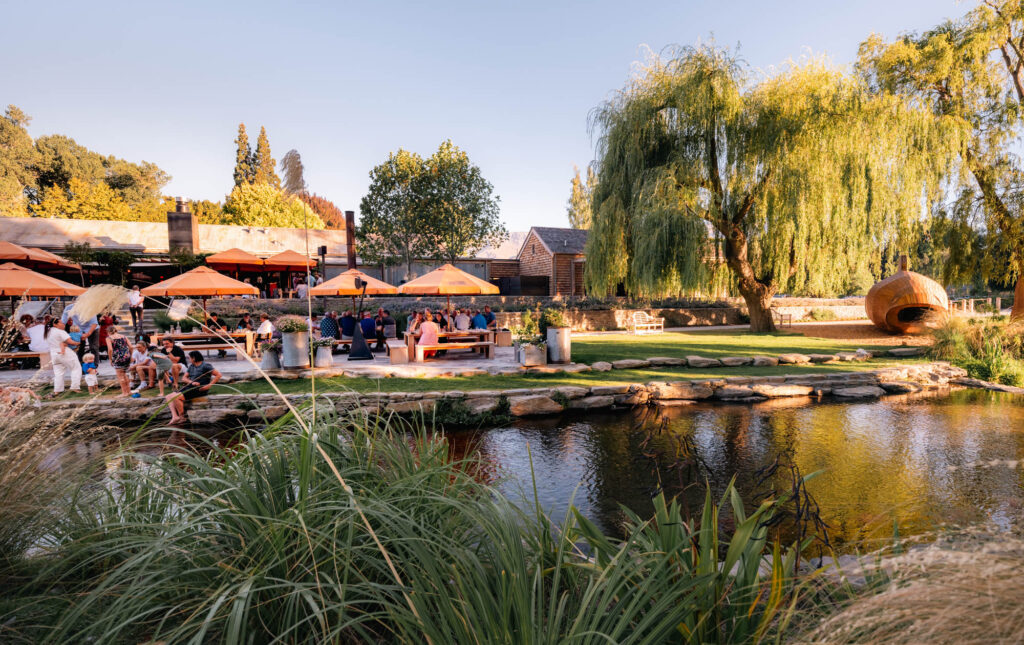Sakurai’s inspirational Nissan Skyline: the Hakosuka
It took 19 years for Steve Radich to achieve his dream of owning a Skyline Hakosuka, but what he ended up with is perfection in an extremely low-kilometre example which is our cover feature in this issue.
Back in 2005, Steve hatched a plan to one day own his dream Skyline: the legendary Hakosuka. Over the next 15 years, the list of Skylines Steve bought and sold went as follows. First was a 1998 Nissan Skyline GT, with two doors too many. It was replaced with a red GTT of the same year, but with the correct number of doors! Finally, in 2020, Steve found himself looking at a white 1999 GTR sitting in his shed.
“I was well down the path of getting to the dream of trading my way to owning a Hakosuka,” he says.”
Don’t forget that this edition also comes with our FREE huge wall poster. This issue features a fully restored 1968 Ford Cortina GT Mark II.
To purchase a copy of this magazine head to our online shop


Morris fast mover
Owning an important historic racing car such as the Begg FM4 requires a period-correct transporter, and the Rush family has acquired an impressive beast that fits the bill, a 1965 Morris FG60.
“As befits this one-of-a-kind transporter, the car riding on the back is also special. It’s a 1970 Begg FM4 F5000 – build number one of one.
The car runs a 302ci small-block Chevrolet, making approximately 500bhp and 542Nm of torque utilising four Weber downdraught carbs and a magneto.
George Begg built the Begg FM4 Formula 5000 car with McLaren M10A uprights and rims. During 1971 and 1972, David Oxton campaigned the car in both the Gold Star and Tasman racing series, winning rounds at Pukekohe and Timaru and earning a second place at Levin and Bay Park to take the Gold Star Trophy.”

Bob’s Bambina
Fiat’s diminutive Nuova 500F became an overnight sales success in 1965, when, at the stroke of a pen, Torino Motors managing director, Rob Elliott, decided on the new improved model’s catchy sales name: Bambina!
Bob McMurray has spent a lifetime inside Formula 1, including 33 years he and his wife, Shaune, spent working for McLaren from his earliest days as a mechanic through to watching Scott Dixon’s first Kiwi win at Indianapolis. Bob is now one of our top motorsport commentators and Toyota Racing New Zealand’s ambassador, a role he relishes.
“Bob now has a Fiat 500 F. The story of how he became its owner almost by accident and of its restoration is one of those that has ended well, and it was a bit of a laugh getting there. Bob’s Fiat actually has a distant McLaren connection.
Auckland classic car restorer, Vaughan Wilkinson, has just completed an extensive restoration of the Bob and Shaune Fiat 500 F. It is a stunner of a little car in a two-tone colour scheme.”

Girls N Gasoline
If Christchurch automotive technician, Melissa Hannan, tells you your car is now running sweet, you can bet she has used her mechanical skills to make it that way!
“Melissa left Auckland for Christchurch three years ago. She and her bagged 1959 Chevrolet Parkwood station wagon have fitted in nicely with the cruising car club scene there. Melissa has a long-held passion for cars, and can sort out gremlins in anything from an old-school car to modern techno-wizardry. It’s now 17 years since she entered the industry as a mechanic apprentice. The move to Christchurch was the right one, she says.
“I love it; the people are so friendly down here. I’ve found they are more willing to help me here, too.”

Extreme McLaren experience
2024 McLaren 675 LT Supercar Classic
Kiwi petrolheads have and always will possess a strong affinity with McLaren. We are all familiar with the humble origins of Bruce McLaren, his legacy of global motorsport success, and the brilliance of road-going supercars bearing his name.
“The current crop of McLaren road cars can be traced back to Bruce, daily driving his own M6 GT throughout England during the latter half of the 1960s. You then can’t ignore the coveted and legendary F1, which for many is not only the greatest McLaren road car ever, but one of the greatest cars ever built, period!
However, the car that really set the wheels turning for mainstream McLaren road car production was the MP4/12C launched in 2011.”

1971 HG Holden Kingswood
The Brokenwood Mysteries TV show team has been battling crime in a sleepy, rural New Zealand setting for 10 series since the programme premiered in 2014. Conceived by writer/producer Tim Balme, the international award-winning show now entertains audiences in 150 countries, and overseas fans travel to seek out the sets
“At first glance, it’s hard not to see The Brokenwood Mysteries as a local version of the British series, Inspector Morse, with Detective Inspector Mike Shepherd, his HG Holden Kingswood, and his passion for country music mimicking Chief Inspector Morse, his Mark 2 Jaguar, and his passion for classical music.
Add to this the similarities with Midsomer Murders and a homicide rate disproportionate to its low-key quaint English village backdrop, and the formula is there for one of the best murder mystery series around.
These are not bad comparisons, as the success of the show around the world attests. As a fan of all three shows, and the previous owner of a 1971 HG Holden Kingswood – which I suspect came out of the same batch as Mike Shepherd’s; my HG’s registration plate started with FQ and that of Mike Shepherd’s is FT – this article was just waiting to be written, particularly as The Brokenwood Mysteries celebrates its 10th anniversary.”

Motor Sport Flashback
Well, he was just 17
Despite recording the fastest lap of the race and robbing Lando Norris of a valuable championship point, Daniel Ricciardo’s disappointing result for RB at the Singapore Grand Prix has benefited Liam Lawson, with Pukekohe’s finest taking the Australian’s seat for the balance of the 2024 season.
“Liam has unquestionable ability. He did a superb job when he subbed for Ricciardo towards the tail-end of 2023. He also showed he belonged – that doesn’t always happen; we’ve seen enough F3 and F2 champions make it into F1 and never quite manage to take that next step. And, we’ve seen guys come along who never came close to an F2 or F3 title, but slide into F1 with ease. Whether or not Liam is on the grid for round 1 of the 2025 Formula 1 world championship, depends on his performance for the remainder of this season. As Liam said following his confirmation, the goal now is to stay in Formula 1. One thing is certain: there is change right, left, and centre.”

Apprentices – Part 1
Encouraging young people to learn the necessary skills is a big issue facing restoration companies
“Apprentices Jesse Rawson (22) and Jonte Clark (19) are rare these days, with restoration companies struggling to find young people with an aptitude for the industry.
However, Auto Restorations in Christchurch has taken on these two young people, who are passionate about their work and are regular participants in vintage car rallies and trials such as the Irishman Rally.”

Chevrolet’s blistering Corvette ZR1 for 2025
Chevrolet’s Corvette has established itself as a great niche model that just won’t die and with the launch of the ZR1 model in 2025, its heritage just got even better
“The original Corvette of 1953, chugged along with 112 Kw (150 bhp), so that is progress. It’s a stunning-looking car with an estimated top speed in excess of 346 kph (215 mph). It should be a contender for higher placings at Le Mans than achieved in 2024, but they did finish the more than 4000 km event!
It’s a long way down the development road to the 1963 cars covered elsewhere in New Zealand Classic Car #396, with Jonathan Pappe’s look at three amazing split rear window examples.
This 2024 model revives the split rear window, so it’s appropriate to add.”

Kits And Pieces
Saker for driving
New Zealand’s home-grown Saker supercar has developed an enviable performance reputation on the world’s racetracks; now, a local enthusiast has developed one as a formidable open-road cruiser.
“The Saker SVS is not the first car built by John Davies, nor will it be the last, but it is probably his most difficult build and definitely the most ambitious. He bought his first home-built car, a Mistral, when he was about 16 – around 50 years ago. It needed a lot of work and, as he was not allowed to work on it in his parents’ garage, he used to work on it on the street outside his house. He drove it and worked on it for about two years, then decided to swap the engine. At the time, he knew almost nothing about cars other than the fact that, if you put them together in the opposite order that they were pulled apart, they should still work.”

Special Travel Feature – Part 1
Once around the block – a very small South Island invasion
Patrick Harlow and a couple of mates decided a tour of the scenic South Island was well overdue so they set off on a nine-day raid of some of the island’s best scenic spots, cosseted in three very different American Grand Tourers.
“We decided to do a nine-day tour of the South Island of New Zealand for a bit of adventure. Where possible, we would drive sealed back roads, avoid traffic, and see New Zealand at its best. Thus, we invaded the South Island driving three American cars. Our first skirmish was supposed to be just beyond the historic Tophouse Inn located at the top of a hill in St Arnaud. This historic 1887 building has been offering accommodation to travellers since the 1850s, and at one stage was the main junction of the roads between Blenheim, Nelson, and Murchison, near Lake Rotoiti.”

Motorman
An odds-challenging Austin
The Austin A90 Westminster saloon has a rather special motoring heritage, after setting an amazing long-distance record in 1955. It also went on to perform well in New Zealand car trials, as Donn Anderson recalls
“Seven decades ago, Austin’s A90 Westminster caused a sensation by becoming the first motor vehicle to travel from the North Cape in Europe to the southern tip of Africa. Here was an everyday British saloon, without the aid of four-wheel drive or today’s technology, tackling some of the most appalling conditions to complete a gruelling 28,000-kilometre drive.
Richard Pape, a feisty Yorkshireman, was the man behind the wheel, and a more determined soul would be difficult if not impossible to find. An RAF navigator during World War II, his plane was shot down during a bombing raid on Berlin, and Pape spent three years in a German prisoner of war camp, working on and endeavouring to complete escape plans, before finally succeeding on his fourth attempt.”

Looking back: racing down under – Part 1
In this Part 1, Gerard Richards looks back on a time when individual ingenuity, colloquially called ‘Kiwi No. 8 wire mentality’, brought up individuals of outstanding excellence in local motor racing, having a big influence on a youngster growing up in ‘Kiwi culture’.
“Aotearoa/New Zealand in the 1950s was a basic sort of place. Refinements were few and far between; home-grown culture was thin on the ground unless you were of Maori descent. The bastions of European society – if one could call it that – were the repressive social lore of the time. They were driven by the conservative religion, a legacy of Victorian England, the repressive aftermath of the war, a subversive drinking culture, and a sporting ethos dominated by the All Black rugby team. Apart from Ed Hillary’s triumphant 1953 assault on Mt Everest, the mantra of ‘rugby, racing, and beer’ seemed an apt slogan to describe life in these far-flung isles.”

Postcard from the USA
If you are travelling to the ‘States this summer, Jim recommends recharging your ‘batteries’ by giving yourselves a decent stopover in Los Angeles and visiting the Zimmerman Driving Museum.
“If you are planning a big O.E. or a business trip to the ‘States this summer, you may need a few hours layover in Los Angeles before going on to your ultimate destination. Thirteen hours in the air – even in business class – takes its toll, and if you schedule connecting flights too close together, you could be courting disaster at one of America’s busiest airports.
Often an overnighter in L.A. is a prudent choice.”

Shelf Classics
Fun Ho! midgets are 60
Fun Ho! toys have a special place in New Zealand history; they are a real Kiwi icon: tough, durable, and virtually indestructible
“The kings of the sandpit from the 1940s – and still there is nothing to rival them as the premiere sandpit toys: Fun Ho! toys. The story started in 1935, when Jack Underwood began making toys in the basement of his home as a hobby. In recent times, the Fun Ho! workshop has seen an increasing demand for reproduction Fun Ho! toys, which are cast at the museum, using the original moulding plates and boxes.”

Behind the Garage Door
Italian style meets rural Canterbury
Christchurch custom and classic car restorer, Phil Adamson, has realised his dream of more than a decade ago: to build a rare Italian thoroughbred, armed only with measurements from a scale-model Maserati 450S!
Phil began planning his project about 12 years ago in his spare time, but a casual comment changed his focus.
“My business partner, Aaron, and I were having a beer and I was building a chassis. The dream was to build a ’34 Ford roadster.”
Then they saw a photograph of a rare 1957 Maserati 450S racing sports car. Around nine original cars were built and raced by notable drivers of the day, such as Stirling Moss and Carroll Shelby.
“It really flipped it on its side,” Phil says.
With access to the complete running gear from a late-model Maserati 3200GT obtained from a discontinued project, it was decided to build something special.”

Marketplace Report
BMW Z3
When the Mazda MX-5 kick-started the revival of the back-to-basics sports car in 1989, many manufacturers thought it would be a mighty fine idea to cash in on the new roadster boom.
“MG had the MGF, Porsche gave us the Boxster, and BMW’s answer? Why – the Z3, of course.
Launched with much fanfare in 1995, the Z3 was pitched by BMW as an MX-5 rival with throwbacks to BMW’s sports car heritage.
“The Z3 was competing in the MX-5 market, which exploded, but it was also a great tribute to the classic 507, sharing a few design details,” says Z3 owner, Tony Hawke.”

Coaching from the bench
Fibreglass repair
Cars with fibreglass bodies don’t dent; they crack. The panels on America’s Corvette sports cars, for example, will take a lot of abuse and bounce back, but, if struck hard enough in a collision, they will fracture and tear.
“Fixing fibreglass damage is a specialised art, and I had only a vague idea how to go about it until recently. Then, Tom Horvath – my good friend and co-author of our book, Pro Paint & Body, published by HP Books in the States – got a ’78 Corvette 25th Anniversary Edition with a fractured front mudguard in his shop.”

Show stoppers
We take a look at some of the top classics from shows around the country. many will feature later in New Zealand Classic Car magazine
Price On
Road User Charges for all by 2027?
As has become the norm, no thought has been given to our classics by the bureaucratic noddies!
In August 2024, Simeon Brown, the Minister of Transport, announced, that by 2027 all vehicles would be paying road user charges (RUCs). Electric vehicles (EVs) have recently started paying RUCs, and the government has “expressed concern” that, in order to pay properly for ‘better roads’, there has to be an alternative to the fuel tax.

News
Vintage and classic auction at Waimumu.
The Ayrburn Classic Car Festival will take place on the scenic grounds of the Ayrburn Winery in Arrowtown, Queenstown Lakes District, from Friday, 21 March to Sunday, 23 March 2025, coinciding with Otago’s anniversary weekend.
Goodwood Revival 2024.
Inglewood Rotary Charity classic car show – Sunday, 26 January 2025,
and more….
To purchase a copy of this magazine head to our online shop




